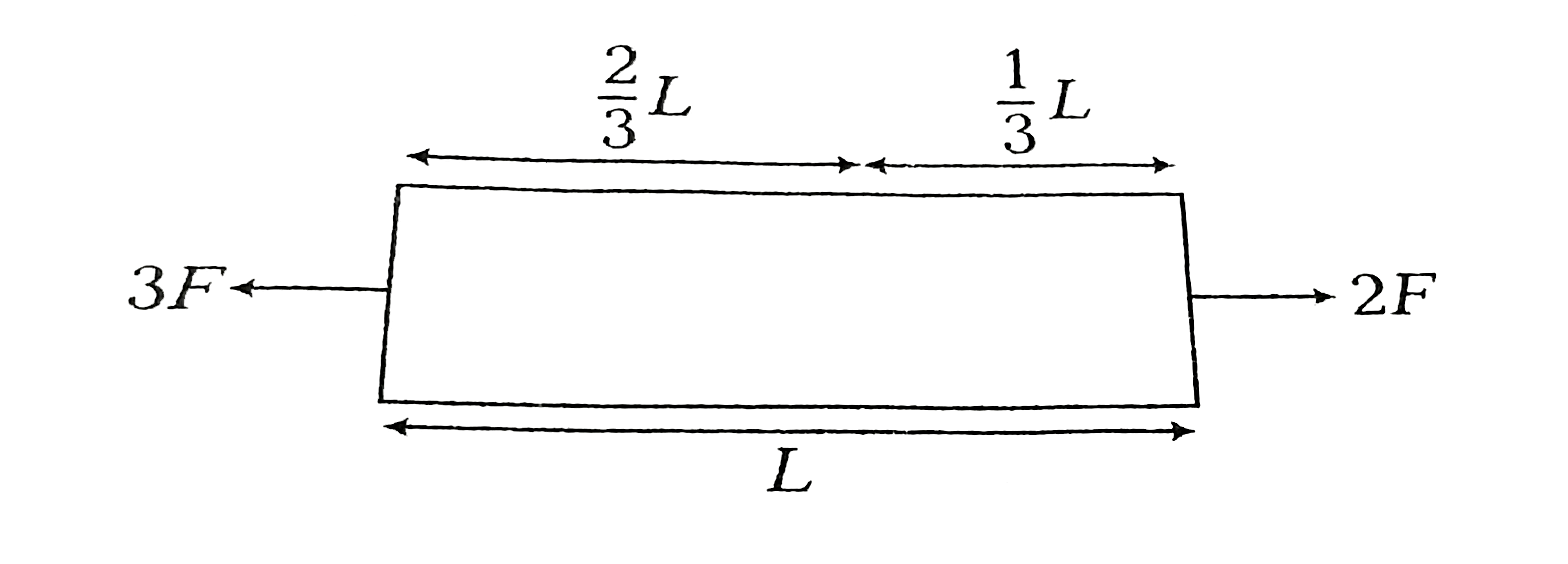A copper rod (initially at room temperature 20∘C) of non-uniform cross section is placed between a steam chamber at 100∘C and ice-water chamber at 0∘C. A and B are cross sections are as shown in figure. Then match the statements in column -I with results in columns-II using comparing only between cross section A and B. (The mathematical expressions in column-I have usual meaning in heat transfer).
_E01_154_Q01.png)
Column-IColumn-II(A)initially rate of heat flow(dQdt)will be (p)Maximum at sectionA(B)At steady state rate of heat flow(dQdt)will be (q)Maximum at sectionB(C)At steady state temperature gradient∣∣(dTdx)∣∣will be (r)Minimum at section B(D)At steady state rate of change of temperature(dTdt) at a certain point will be(s)Same for all section
The correct Answer is:A-P,R;B-S;C-Q;D-S
Initially, both temperature and area is more at A. So, the rate of flow of heat is maximum at A. At steady state, rate of heat flow is constant for all cross sections.
As dQdt=KA(−dTdx)⇒∣∣∣dTdx∣∣∣∝1A
At steady state, T is constant for every cross section. Hence, dTdt=0 at steady state.
Topper's Solved these Questions
- PROPERTIES OF MATTERBOOK - VMC MODULES ENGLISHCHAPTER - PROPERTIES OF MATTEREXERCISE - JEE Main (Archive) Level - 1
48 Videos
- PROPERTIES OF MATTERBOOK - VMC MODULES ENGLISHCHAPTER - PROPERTIES OF MATTEREXERCISE - JEE Advanced(Archive) Level - 2
1 Videos
- PROPERTIES OF MATTERBOOK - VMC MODULES ENGLISHCHAPTER - PROPERTIES OF MATTEREXERCISE - Level -1
90 Videos
- MOVING CHARGES & MAGNETISM BOOK - VMC MODULES ENGLISHCHAPTER - MOVING CHARGES & MAGNETISM EXERCISE - IN-CHAPTER EXERCISE-K
10 Videos
- QUIZBOOK - VMC MODULES ENGLISHCHAPTER - QUIZEXERCISE - PHYSICS
30 Videos
Similar Questions
Match the conditions/ expressions in Column I with statement in Column II

View SolutionSymbols have their usual meanings. Match the Column-I with Column-II:

View SolutionMatch the conditions / expression in Column I with statement in Column II.

View SolutionA uniform cylindrical rod of length L and cross-sectional area by forces as shown in figure.

The elongation produced in the rod is
View SolutionIn a container of negligible mass, ‘m’ grams of steam at 100°C is added to 100 g of water that has temperature 20°C. If no heat is lost to the surroundings at equilibrium, match the items given in Column I with that in Column II.

View SolutionTwo wire each carrying a steady current I are shown in four configurations in Column I. Some of the resulting effects are described in column II. Match the statements in Column I with the statements in Column II.

View SolutionI−V characterstic of a copper wire of length L and area fo cross-section A is shown in Fig. The slope of the curve becomes

View SolutionThree rods of uniform area of cross section A=10−7m2 are arranged as shown in Fig. Find out the shift in point B,C and D.

View SolutionThe V – I graph for a wire of copper of length L and cross -section area A is shown in the figure below . The slope of the graph will be

View SolutionThe V – I graph for a wire of copper of length L and cross -section area A is shown in the figure below . The slope of the graph will be

View Solution
